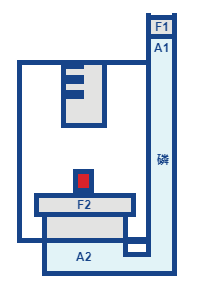From the pollution of the Songhua River and the Huaihe River to the blue algae incident in Taihu Lake, and to a series of environmental protection events in recent years, the Chinese government has reflected the heavy price paid by the Chinese economy in the course of more than 20 years of rapid growth. In March of this year, when 105 CPPCC members joined in unanimously in calling for the joint signing of the “Proposal on the Relocation of PX Projects in Xiamen Haicangâ€, environmental protection has not only become the number one priority of this year’s CPPCC session, but has again set off the sensitive nerves of the chemical industry.
Associating with the painful lesson of Jilin Petrochemical's explosion and Songhua River pollution in 2005, this year the State Council promulgated the “Regulations on the Reporting and Investigation of Production Safety Accidents†in order to strengthen the environmental protection efforts after punishment. The regulations provide clear operating procedures for accident reporting, investigation and handling, and stipulate that if a special major accident occurs, the unit where the accident occurs may be fined not less than 2 million yuan but not more than 5 million yuan.
At the same time, the “Regulations on the Management of Emission Permits (Draft for Soliciting Opinions)†drafted by the State Environmental Protection Administration has also begun to solicit opinions widely. The imminent introduction of this regulation means that the country will change the status quo without a national-level emission permit management system. The maximum penalty for illegal discharge of pollutants is expected to increase to 1 million yuan. Prior to this, the upper limit of the penalty imposed by relevant laws was generally not more than 200,000 yuan.
Due to its own characteristics of the chemical industry, it will inevitably become the vortex center of environmental protection storm. This year, the State Environmental Protection Administration has also improved the “access threshold†for environmental access in the chemical and other industries, and has implemented “regional†in regions where environmental pollution is serious, where environmental violations are prominent, and where national environmental protection tasks such as total discharge control of pollutants cannot be accomplished. Limited batch."
 Application areas are almost limitless. Usually, a laboratory hydraulic press will be used to prepare samples for analysis by compressing them into pellets or thin films. The particles are forced together, creating a homogenous sample ideal for spectroscopic examination.
Application areas are almost limitless. Usually, a laboratory hydraulic press will be used to prepare samples for analysis by compressing them into pellets or thin films. The particles are forced together, creating a homogenous sample ideal for spectroscopic examination.
Associating with the painful lesson of Jilin Petrochemical's explosion and Songhua River pollution in 2005, this year the State Council promulgated the “Regulations on the Reporting and Investigation of Production Safety Accidents†in order to strengthen the environmental protection efforts after punishment. The regulations provide clear operating procedures for accident reporting, investigation and handling, and stipulate that if a special major accident occurs, the unit where the accident occurs may be fined not less than 2 million yuan but not more than 5 million yuan.
At the same time, the “Regulations on the Management of Emission Permits (Draft for Soliciting Opinions)†drafted by the State Environmental Protection Administration has also begun to solicit opinions widely. The imminent introduction of this regulation means that the country will change the status quo without a national-level emission permit management system. The maximum penalty for illegal discharge of pollutants is expected to increase to 1 million yuan. Prior to this, the upper limit of the penalty imposed by relevant laws was generally not more than 200,000 yuan.
Due to its own characteristics of the chemical industry, it will inevitably become the vortex center of environmental protection storm. This year, the State Environmental Protection Administration has also improved the “access threshold†for environmental access in the chemical and other industries, and has implemented “regional†in regions where environmental pollution is serious, where environmental violations are prominent, and where national environmental protection tasks such as total discharge control of pollutants cannot be accomplished. Limited batch."
How does a hydraulic press work? Pascal's Law in action
In a hydraulic press, a modest mechanical force (F1) is applied to a small area (A1). As the fluid is moved in one location, it inevitably moves elsewhere within that channel. Then a larger area (A2) generates a magnified mechanical force (F2). The force is transmitted via hydraulic pressure generated by the initial effort, F1.

Hydraulic Press Machine,Shop Press,Hydraulic Press For Sale,Workshop Press
Jiangsu Hoston Machine Tools Co., Ltd. , https://www.hostoncncs.com